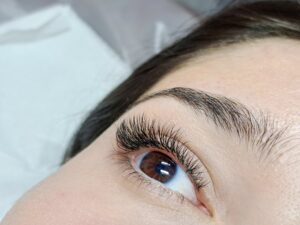Understanding your skin type is very important to keep it healthy and flawless. The skincare product working for your friend, colleague, or a beauty influencer may cause the opposite results to you. No product is one size fits all. There are five basic types of skin including dry, oily, normal, combination, and sensitive. Read on to know the basic characteristics of each type.
Dry Skin
Dry skin is usually caused by external environmental factors, including weather conditions and low air humidity. For some people, it becomes a lifelong condition. Rough skin texture, dull complexion, redness, skin tightening, and flaking are the symptoms of dry skin. Using gentle facial cleansers and hydrating serums or moisturizers is vital to keep it healthy. Hyaluronic acid is a fantastic skincare ingredient for dry skin. In addition, the organic formulas containing chamomile oil, shea butter, and aloe vera help soothe the dryness.
Oily Skin
If your skin keeps on shining throughout the year, you are likely to have an oily skin type. The most incredible perk of having this skin type is it will develop wrinkles and fine lines later in age. Natural skin oils protect and moisturize your skin. The bad news is the excessive sebum production can lead you to have acne breakouts. Exfoliate your skin twice a week and use an oil-free, non-comedogenic moisturizer or serum to prevent clogging of pores. Do not forget to remove your make-up before going to bed. Use charcoal or silica mask once a week to tighten your pores.
Normal Skin
A well-balanced skin is known as normal skin. It does not react negatively to weather changes and new skincare products. It is characterized by fewer fine lines, even skin tone, and minimum blemishes. If you are lucky enough to have a normal skin type, you can play with beauty products and try experimenting with new facial cleansers, moisturizers, and masks. It usually is clean and does not require special care. Follow a basic skincare routine consisting of a cleanser, moisturizer, and SPF to keep it looking its best.
Combination Skin
The combination skin type has the characteristics of both dry skin and oily skin. Most people with this skin type have an oily T-zone (forehead, nose, and chin). The rest of the face is usually dehydrated. People mistakenly consider it the oily skin type. It is challenging to take care of it. Gentle exfoliating of your T-zone can help control the excess production of sebum. Use gel-based moisturizers that absorb quickly into the skin. Avoid over-moisturizing and stressing your skin. Try spot treatment to heal pimples.
Sensitive Skin
Managing sensitive skin is super tricky. It requires great effort and consideration to determine which ingredient works for your skin type. Inflammation, redness, rash, allergic reaction, and irritation are the common symptoms of sensitive skin. Stick to one formula or product at a time. Try a patch test before trying new skincare or cosmetic product. Stay away from the products containing parabens, synthetic fragrances, mineral oils, urea, DEA, or TEA. Instead, use skin-soothing ingredients like aloe vera and cucumber in the form of facial masks or moisturizers.
*Information in this article is not medical advice and may not be factually accurate. It is intended for entertainment purposes only. Consult with a physician before attempting any tips in this blog post and to get the most up to date factual data about any procedure or treatment.














